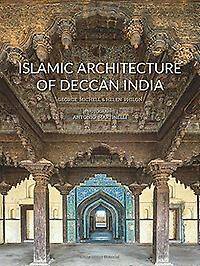
- Afhalen na 1 uur in een winkel met voorraad
- Gratis thuislevering in België vanaf € 30
- Ruim aanbod met 7 miljoen producten
- Afhalen na 1 uur in een winkel met voorraad
- Gratis thuislevering in België vanaf € 30
- Ruim aanbod met 7 miljoen producten
Zoeken
€ 76,95
+ 153 punten
Omschrijving
The buildings erected in the Deccan region of India belonged to a number of pre-Mughal kingdoms that reigned in the Deccan from the middle of the 14th century onwards. The monuments testify to a culture where local and imported ideas, vernacular and pan-Islamic traditions fused and re-interpreted, to create a majestic architectural heritage with exceptional buildings on the edge of the Islamic world. Many are still standing - yet outside this region of peninsular India, they remain largely unknown. General publications on Indian Islamic architecture usually devote a single chapter to the Deccan. Even specialist monographs can only cover a portion of the region, due to the sheer number of sites. While it is impossible to encompass the full breadth of the subject in a single volume, this book aims to embrace the visual diversity of the Deccan without sacrificing the rigor of academic study. Structures of historical or architectural significance are placed in their context, as the authors discuss building typologies, civic facilities and ornamental techniques, from plaster and carved stone to glazed tiles and mural painting. A chapter is dedicated to each principal Deccan site, interweaving the rise and fall of these cities with a pictorial journey through their ruins, and each building is accompanied by an overhead plan view.
Specificaties
Betrokkenen
- Auteur(s):
- Uitgeverij:
Inhoud
- Aantal bladzijden:
- 416
- Taal:
- Engels
Eigenschappen
- Productcode (EAN):
- 9781851498611
- Verschijningsdatum:
- 4/04/2018
- Uitvoering:
- Hardcover
- Formaat:
- Genaaid
- Afmetingen:
- 257 mm x 333 mm
- Gewicht:
- 3220 g

Alleen bij Standaard Boekhandel
+ 153 punten op je klantenkaart van Standaard Boekhandel
Beoordelingen
We publiceren alleen reviews die voldoen aan de voorwaarden voor reviews. Bekijk onze voorwaarden voor reviews.








